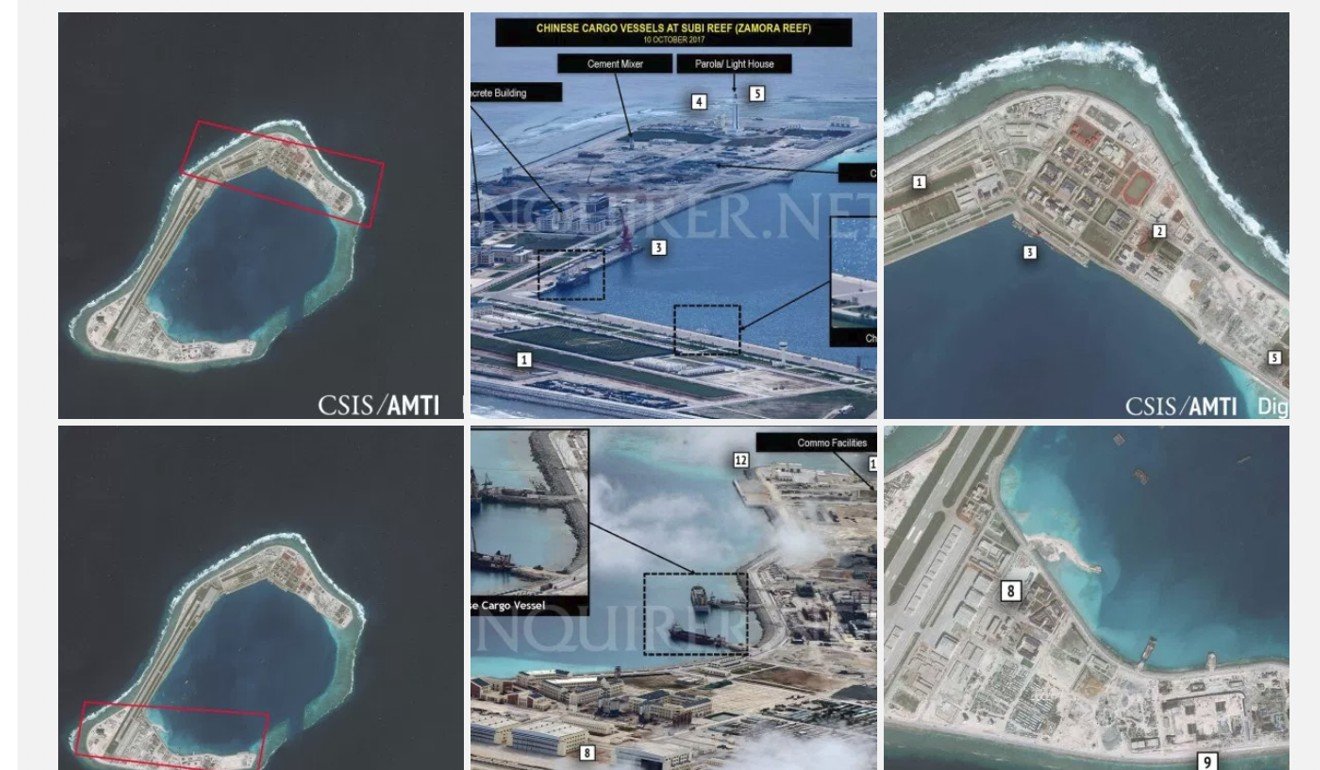
China ‘installs cruise missiles on South China Sea outposts’
Weapons have been deployed in the disputed Spratly Islands, according to a TV report, citing US intelligence
China has installed anti-ship cruise missiles and surface-to-air missile systems on three of its disputed outposts in the South China Sea, US news network CNBC reported on Wednesday.
The move, if confirmed, would mark the first Chinese missile deployments in the Spratly Islands where several of its Asian neighbours, including Vietnam and Taiwan, have rival claims.
CNBC quoted unnamed sources with direct knowledge of American intelligence reports as saying that US assessments indicated the missiles were moved to Fiery Cross Reef, Subi Reef and Mischief Reef within the past 30 days.
The US Defence Department, which opposes China’s installation of military facilities on outposts it has built up in the South China Sea, refused to comment.
China’s defence ministry also did not immediately respond to a request for comment.
Beijing has made no mention of any missile deployments, but says its military facilities in the Spratlys are purely defensive, and that it can do what it likes on its own territory.
Greg Poling, a South China Sea expert at Washington’s Centre for Strategic and International Studies, said deploying missiles on the outposts would be significant.
“These would be the first missiles in the Spratlys, either surface-to-air, or anti-ship,” he said.
He added that such deployments were expected as China built missile shelters on the reefs last year and had already deployed similar missile systems on Woody Island further to the north.
Poling said it would be a major step on China’s road to dominating the South China Sea, a key global trade route.

CNBC said the YJ-12B anti-ship cruise missiles allowed China to strike vessels within 295 nautical miles. It said the HQ-9B long-range surface-to-air missiles could target aircraft, drones and cruise missiles within 160 nautical miles.
US Admiral Philip Davidson, nominated to head US Pacific Command, said last month China’s “forward operating bases” in the South China Sea appeared complete.
“The only thing lacking are the deployed forces,” he said. Once these were added, “China will be able to extend its influence thousands of miles to the south and project power deep into Oceania”.
Davidson said China could use the bases to challenge the US regional presence and “would easily overwhelm the military forces of any other South China Sea claimants”.
“China is now capable of controlling the South China Sea in all scenarios short of war with the United States,” he said.
Beijing’s deployment of HQ-9B and YJ-12B missiles is aimed at boosting its air and maritime defences in the region as the US steps up freedom of navigation operations (FONOPs) and patrols there, according to Song Zhongping, a former member of the PLA’s Second Artillery Corps.
“The US FONOPs are challenging China’s sovereignty and its historical domination in the region ... so Beijing faces two major threats – from the sea and from the air,” said Song, who is now a military commentator for Phoenix Television in Hong Kong.
“In order to protect its national interests and its belt and road [trade and infrastructure strategy] Beijing also needs to strengthen its military build-up in the Spratly and Paracel archipelagos so that its navy and air force can go further afield.”
Song said having missiles on the artificial islands was part of the Chinese government’s goal of building a strong navy and air force.
“Missile deployments on the Spratly and Paracel Islands will help the Chinese military to better control both the sea and the air in the region,” he added.
Additional reporting by Minnie Chan

